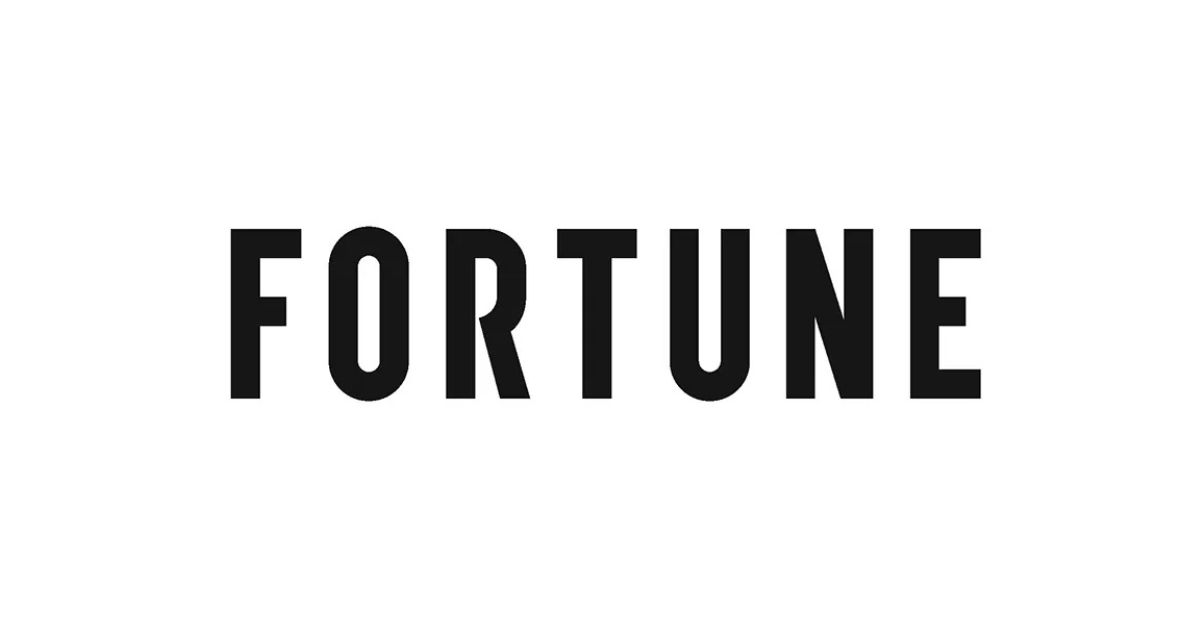Imagine a workplace where employees are not just satisfied, but genuinely excited to come to work every day. A place where their growth is nurtured, their contributions are recognized and their voices are heard. This is the kind of environment organizations are striving to create and it’s the key to retaining top talent.
When employees stay, they bring stability, knowledge and a sense of continuity that drive innovation and success. Employee retention isn’t just about keeping your staff; it’s about creating a culture that encourages loyalty, fosters professional development, and ultimately propels the organization forward.
But retaining top talent requires more than just competitive salaries and benefits. It involves creating a supportive, inclusive workplace culture where employees feel valued and engaged. It means offering opportunities for career growth and ensuring that employees feel their contributions are making a meaningful impact. It’s about communication, recognition and the genuine commitment to employee well-being.
In this blog, we will delve into the importance of retention and reveal smart strategies that can transform your workforce into a powerhouse of loyalty and productivity. Whether you’re looking to improve your current retention efforts or starting from scratch, these insights will provide you with the tools you need to build a thriving, dedicated team that’s eager to stay and grow with your organization.
What is an Employee Retention Strategy?
An employee retention strategy consists of a deliberate set of actions and policies to reduce turnover and keep valuable employees within an organization for the long term. These strategies focus on enhancing job satisfaction, fostering a positive work environment and promoting career growth and development opportunities.
It’s important to recognize that low employee engagement often one of the first signs of turnover risk. According to Workday, there can be warning signs of a departing staff member up to nine months before they actually leave—and these signals often reveal themselves in engagement measurements. By addressing these early warning signs, organizations can effectively mitigate turnover risks and cultivate a loyal, motivated workforce.
Why Are Employee Retention Strategies Important?
Employee retention strategies are important for companies because turnover is expensive and disruptive to business operations. According to the Bureau of Labor Statistics, an average of 3.47 million people quit their jobs each month from January to April 2024. This number highlights the pressing need for effective retention strategies.
The financial impact of losing a key employee is significant—it hurts the bottom line, hinders further growth and threatens your organization’s reputation. When experienced employees leave, the cost of recruiting, hiring and training new talent quickly adds up. Moreover, the loss of institutional knowledge and the disruption to team dynamics can slow down projects and reduce overall productivity.
On the flip side, high retention rates typically indicate high employee engagement, a successful company that attracts new talent and presents a competitive advantage in the market. Other benefits of an effective retention strategy include:
- Lower employee turnover and hiring costs
- Higher customer satisfaction
- Stronger work relationships
- Strengthened team dynamics
- Employee development opportunities
- Optimized talent management through internal promotions
- Better brand reputation
- Increased employee productivity
Fresh demands, new ways of working and a growing younger, digitally savvy workforce requires that ER adapt the strategies we use to keep our people motivated and satisfied.
Why Employees Leave
Understanding why employees leave is crucial for developing effective retention strategies. Conducting thorough exit interviews can help you pinpoint and address the underlying issues that make employees consider leaving. Common reasons like seeking better pay or career advancement are often cited, but other significant factors can drive employees away, such as:
- Workplace harassment and misconduct: According to the 2023 Workplace Harassment and Misconduct Insights, 30% of employees exposed to such behavior left their job, compared to only 11% who were not exposed. And 57% of employees cited harassment or misconduct as a reason or factor in their decision to leave.
- Toxic work environment: When the behavior of coworkers or managers is not aligned with company values, it can create a hostile work environment that drives employees away. Toxicity in the workplace can lead to stress, dissatisfaction and a lack of trust in leadership, ultimately causing employees to seek healthier work environments elsewhere.
- Mishandled or unresolved workplace concerns: Mishandling employee concerns or allowing bad behavior to go unchecked can lead to dissatisfaction and turnover. Only 22% of employees would recommend their organization as an employer when exposed to harassment and misconduct. This percentage drops to 12% when issues are not reported and 7% when reported issues are not investigated. But when employee issues were reported, investigated and resolved, the referral rate increased to 56%. Employee referrals are strongly correlated with satisfaction and lower turnover, highlighting the importance of addressing workplace concerns effectively.
More typical reasons for employee turnover include:
- Lack of career development: The absence of opportunities for growth and advancement can push employees to seek better prospects elsewhere, leading to higher turnover rates. Employees want to feel like they have a future within the organization, and without clear career pathways, they are more likely to leave.
- Poor management: Poor leadership and management practices are a common reason for employee turnover, as employees often leave managers rather than companies. Managers who fail to provide support, recognition and clear direction can drive employees to look for better leadership elsewhere.
- Poor work-life balance: Inadequate work-life balance can lead to burnout and drive employees to look for jobs that offer more flexibility and better work-life integration. Employees need to feel that their personal lives are respected and that they have the time and energy to pursue their interests outside of work.
- Remote/hybrid work expectations: Misalignment between employees’ expectations for remote or hybrid work and the company’s policies can cause frustration and lead to resignations. Clear communication and flexible policies that accommodate employees’ needs can help retain talent in a competitive job market.
- Growing workload: If other team members are consistently leaving, turnover often results in increased workloads for remaining employees, which can lead to further turnover if not managed properly. Overworked employees are more likely to experience stress and burnout, pushing them to seek jobs with more manageable workloads.
- Compensation and benefits: Competitive compensation and comprehensive benefits are critical factors in retaining employees. When employees feel they are not being fairly compensated for their work, or if the benefits package does not meet their needs, they are more likely to seek employment elsewhere where they feel their efforts are better rewarded.
- Company performance: The overall performance and stability of a company can significantly impact employee retention. If a company is struggling financially or failing to meet its goals, employees may feel insecure about their job prospects and decide to leave for more stable opportunities. Employees want to work for successful companies where they can see a future for both the organization and themselves.
14 Strategies for Employee Retention that Work
Below are some proven employee retention strategies that use current trends and focus on the future of the workplace.
1. Connect outside of work
The pandemic further blurred the line between home and work and it’s not going back. It’s time for leaders to reevaluate their approach to employee care and support and make accommodations when necessary. While we used to normalize the separation of work and home life, today it’s become increasingly important for managers to understand and care about what’s happening outside of the workplace. 37% of employees report that their organization understands what they need in their personal lives and for their families, says Harvard Business Review.
2. Give real, visible growth opportunities
Maybe you’ve implemented a continuous performance management system already, but this alone isn’t enough. Yes, regular feedback on strengths and opportunities to grow is an asset, but how are you showing staff members the future of their career journey? Think beyond the tasks they’re assigned and the competencies they need to develop. Add in progress reports, growth options that can be acted on at any time and a clear path to the next level of leadership (if they so choose). Employees are more likely to stick around if they feel that, on their continued journey, they have opportunities to take on a new role and gain new experiences, increasing their earnings potential in a predictable amount of time.
3. Make company culture more than a marketing slogan
So, you’ve “talked the talk” about company culture in your job postings and on your website – so does everyone. Companies with high retention can pinpoint how the team actually lives it. How does it show up when the going gets tough? Do your leaders walk the talk? Do peers hold each other accountable to live the espoused culture, and do they call each other out when the culture is violated, even in small ways? The difference between “yes, we have company culture” and “we have an incredible company culture that includes this and this and this, which has increased our employee satisfaction by this percent” is huge. Make culture norms clear, more than just “happy talk,” and you’ll see a difference in the productivity and purpose of your team without seeing a difference in the names and faces of your team.
4. Implement a talent management system
For those who aren’t sure of the exact definition, a talent management system is a method of finding, developing and retaining top-notch people in the workplace. In today’s job market, a talent management system that actively tracks, collects and analyzes data to drive better engagement should be a priority for every organization. Unfortunately, for some smaller organizations this is a big, complicated task they must tackle without a dedicated talent management function. However, it doesn’t have to be complex. Articulate your philosophy of internal job rotations or mobility clearly, and actively recruit internal talent for deliberate stretch assignments. HR practices such as stay interviews can be one way for HR and ER managers to measure how well talent management and development processes are working, and the extent to which they’re driving retention of your best people.
5. Make work more rewarding
When employees are disengaged in their work, something deeper is amiss. Organizations need to dig into the root causes of indifference. By truly understanding what motivates their employees, companies can craft targeted strategies to make work more rewarding. This could mean offering professional development opportunities, recognizing achievements more frequently or fostering a more inclusive and supportive work environment.
6. Bring in a coach or consultant when needed
Being so close to your team can make it difficult to see what needs to be addressed or what’s missing. Sometimes a little outside help can go a long way. For example, a professional coach can provide an objective perspective on your company’s culture, help identify areas for improvement and aid in developing a realistic plan for addressing them. A consultant may also provide advice on specific engagement initiatives that are working for other clients and offer best practice advice around how your organization can incorporate them.
7. Offer opportunities for social impact
Action speaks louder than words. Show your team you care about more than just their performance at work by offering opportunities for social impact. .Many employees want to work for and stay with companies that are making a positive impact on society. By opening up possibilities for employees to volunteer, donate to charitable causes or participate in sustainability initiatives, you can demonstrate your commitment to corporate social responsibility in a meaningful way. The benefits of having a socially-minded team reach far beyond simply improving employee satisfaction and reducing turnover.
8. Keep managers continually involved
Marcus Buckingham spoke truth when he said “people leave managers, not companies.” It’s necessary that managers, even those who don’t interact with staff on a daily basis, understand their influence on employee engagement. According to SHRM, managers need the proper tools and resources to handle ER issues, but they also need to be held accountable for their decisions. When managers show genuine interest in their staff and offer consistent feedback, they help improve engagement and retention.
9. Respect employee’s time
Could that meeting have been an email? Everyone values their time, which makes it frustrating when we get pulled away from measurable tasks to participate in unproductive activities. Forbes reports that out of the most significant productivity obstacles, 48% of HR leaders cite meeting length as the highest concern among employees, along with 34% who worry about the lack of agendas in meetings. Keep ER communications efficient and your team will appreciate this respect and ultimately emulate it at work.
10. Collaborate more efficiently
Communication and collaboration techniques have changed, especially for remote workers. With the introduction of platforms such as G-suite and Slack employees often prefer to collaborate anytime, anywhere with other team members or with management. With more methods to connect there’s an increased risk for a disconnect in how people are communicating. Try implementing a system such as an anonymous reporting platform dedicated to making sure everyone feels heard and appreciated.
11. Implement a transparent process for employee feedback
Having a transparent process for employee feedback is absolutely critical. This includes implementing an anonymous reporting system so employees feel safe to voice their concerns and suggestions without fear of retaliation. When employees can come forward, issues are addressed before they escalate, boosting employee satisfaction and trust. This not only supports employee retention, but also builds a healthier work environment.
12. Develop a process to address concerns quickly and follow up
Speed and efficiency in addressing employee concerns can significantly impact retention. Develop a clear, swift process for handling issues as they arise and ensure thorough follow-up to verify that resolutions are effective and satisfactory. This responsiveness shows employees that their voices are heard and valued. According to the 2023 Workplace Harassment and Misconduct Insights, companies that resolve concerns quickly and transparently are more likely to have employees who feel connected to the organization and willing to recommend it to others—56% compared to just 7% when issues were not investigated.
13. Use data to understand what drives retention
Every company has different factors driving retention and turnover. Use data to find out what yours is and fix it. For some organizations, it might be career growth opportunities; for others, it could be addressing a toxic culture or pay discrepancies. Gather the data, analyze it and take targeted actions based on the insights. Taking a data-driven approach will help you tailor retention strategies to your organization’s unique needs.
14. Ensure transparency in issue resolution
Transparency in how issues are resolved and what employees can expect is key to building trust. Clearly communicate the steps taken to address concerns and follow up to ensure that the resolutions are effective. When employees see that their issues are handled transparently and fairly, they are more likely to recommend your company and feel a stronger bond with the organization.
How Can HR Acuity Help With Employee Retention?
Employee retention is a critical component of a successful ER strategy. However, managing retention can be challenging, particularly for organizations with remote workforces. This is where HR Acuity can help.
HR Acuity is a software platform designed to help professionals manage employee relations and compliance. By leveraging HR Acuity’s tools and resources, companies can improve the employee experience by providing a centralized platform for managing relations, tracking feedback and sentiment and identifying areas for improvement. By taking a data-driven approach to employee engagement and retention, ER teams can better understand the needs and preferences of their workforce and develop targeted strategies for improvement.
According to a recent Gallup study, 48% of U.S. employees are looking for or actively seeking a new job. This statistic underscores the critical importance of establishing a strategy that can actually show improvement in these areas with insight into multiple soft returns on investment (those that can’t be directly measured but are valuable in terms of business performance).
HR Acuity can also help organizations reduce the risk of legal and compliance matters related to employee relations. Creating consistent and documented processes for managing employee relations can help to mitigate legal and financial risks associated with employee grievances and disputes. By proactively addressing workplace issues, you can create a more positive and transparent culture, which can ultimately lead to higher retention rates and a more engaged workforce.
Ready to try HR Acuity for yourself? Sign up for your demo today.



